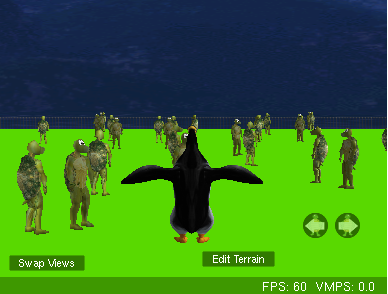Math Unit

The math curriculum unit consists of several distinct parts that can be done separately. The first part is a series of geometry activities on 2D transformations and spatial reasoning. It's also a great unit to introduce students to the power of abstraction in programming - which means breaking down a complex task into smaller parts, and reusing code in the form of procedures. The second part of the curriculum consists of a series of activities on polling and sampling using various simulation models with uniform and non-uniform distributions. Finally, the curriculum ends with a series of activities on growth models, including both linear and non-linear (logistic).
Download the entire curriculum as a zip file .
Math Curriculum At-A-Glance
For a more detailed overview of the curriculum, see the math unit overview .
| Lesson Description | Materials |
|---|---|
|
Geometry: Rotation
(1 class period)
Students draw squares designs of rotated squares using basic movement and repeat blocks. This activity assumes no prior StarLogo TNG background. |
|
|
Geometry: Frame
(1 class period)
Students program a turtle to draw a frame made up of squares. |
|
|
Geometry: Spiral
(1 class period)
Students program a turtle to draw spirals and learn to define, initialize, and get and set the value of a variable. |
|
|
Geometry: Polygon Scaling
(1 class period)
Students program a turtle to draw similar sets of polygons. |
|
|
Polling and Sampling 1
(multiple class periods)
Students use several polling models to explore the math of sampling a population. Each polling model provides an interactive environment for students to form conjectures and test them by running math simulations. In the model, there is a population of turtle agents that has a mystery ratio of preference for coke and pepsi. Students control a pollster agent that can move around and poll individual turtle agents to find out its preference. Students can set parameters like population size (density) and size of sample taken. Students can also modify the model's assumptions by changing the programming code, to, for instance, investigate the effect (if any) of pollster movement. |
|
|
Polling and Sampling (continued)
(multiple class periods)
The teacher guide is still in rough draft form and the activities need to be piloted. |
|
|
Growth Models
(multiple class periods)
In this series of activities, still in development, students use models that simulate the spread of a rumor and the truth that follow a linear and logistic growth pattern. The Teacher Guide describes the proposed activities. |
Sample Lesson
In the Polling and Sampling 1 activity, students control a pollster agent that can move around and poll individual turtle agents to find out its preference. Students investigate what are the factors that may or may not influence representative sample size.

- Login to post comments